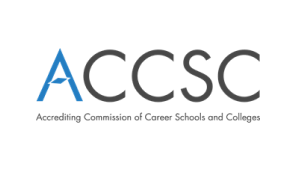Think about the invisible forces shaping our world, especially in places we least expect. One such force, artificial intelligence (AI), quietly influences many aspects of life, including higher education.
From campus admissions to academic advising and even how we assess learning, AI and machine learning are increasingly woven into the fabric of university software systems.
We have seen first-hand how these technologies hold incredible promise. They offer the potential to expand access, overcome systemic hurdles, and genuinely close long-standing equity gaps for countless students.
Yet, with this promise comes a significant concern: the risk of structural inequities finding their way into the software recommendations.
This phenomenon, known as algorithmic bias, is something every college community member—from students and faculty to staff and administrators—must understand as we navigate this rapidly evolving landscape.
Read on to learn about the risks of bias in AI algorithms, real-world examples of bias in AI algorithms, and how to address algorithmic bias to make education fairer.
The very integrity of our educational systems hinges on our ability to recognize and address algorithmic bias head-on. It is time to explore why and how AI can work for everyone.
What Exactly is Bias in AI Algorithms?
Bias in AI algorithms describes systematic yet often unintentional errors within AI systems that lead to unfair or discriminatory outcomes. These errors often mirror or even amplify existing societal biases related to socioeconomic status, race, or gender (IBM). Think of it like a parrot repeating harmful stereotypes because that is all it has ever heard. In higher education, this is not theoretical.
It is not that the AI itself is inherently prejudiced; rather, the way it learns, based on the training data it receives, can ingrain these problematic patterns (SAP). This means if historical data collection reflects past inequalities, the AI might perpetuate them (Brookings).
For instance, AI might favor applicants from certain backgrounds if historical data reflects past discriminatory practices. This issue is not just a technical glitch; it affects the future of real students.
Imagine an AI designed to help students, but instead, it inadvertently steers certain groups away from opportunities. This is the type of real-world impact we are referring to.
AI algorithms can be biased in these ways:
- Biases in Data: If the training data is not diverse or representative, the AI learns a skewed view of reality. For instance, facial recognition AI has struggled with darker skin tones because the imagery used for training did not include enough examples.
- Biases in Algorithm Design: Sometimes, the assumptions or unconscious preferences of human developers get built into the algorithm itself. It is rarely intentional, but it happens.
- Biases in Evaluation: Even if the algorithm is technically sound, how humans interpret and apply its output can still introduce unfairness, based on their own preconceptions.
(Source: IBM)
While AI promises efficiency, we must also consider its potential to deepen disparities. This is particularly true in higher education, where crucial decision-making processes can be influenced. Without careful attention to fairness and bias in AI, we risk digital tools undermining the very equity they could foster.
Common Sources of Bias in AI Systems
| Source | Impact | Real-World Example |
| Biased training data | Replicates historical discrimination. | Admissions algorithms favoring applicants from privileged high schools. |
| Flawed problem framing | Misidentifies root causes of challenges. | Equating ZIP codes with academic potential. |
| Lack of diversity in development teams | Overlooks edge cases affecting minorities. | Facial recognition errors for darker-skinned users. |
Examples of Bias in AI Algorithms
Ever wonder how bias in AI algorithms plays out in real life?
Let’s consider a few case studies.
| Scenario | Impact of Bias |
| Admissions Screening | An AI tool prioritizes applicants from affluent areas due to biased training data, sidelining qualified students from underrepresented regions. (Source: Every Learner) |
| Grading Systems | AI grading software penalizes non-native English speakers for linguistic differences, even if their content is strong. (Source: Nature) |
| Resource Allocation | AI predicts at-risk students but overlooks certain groups due to incomplete data collection and skewing support distribution. (Source: VKTR) |
These examples of bias in AI algorithms show how AI can unintentionally harm students. Curious about AI’s broader impact? Check out The Impact of Artificial Intelligence on Higher Education.
Key Risks:
- Unfair admission decisions.
- Misallocated resources, like scholarships.
- Inequitable grading is based on biased decision-making processes.
A 2021 study found that 80% of AI systems in education showed some form of bias when not properly audited (Springer). Understanding bias in AI is the first step to fixing it.
Understanding Fairness and Bias in AI in College Operations
Colleges and universities adopt AI systems for various critical functions. They are used for admissions, advising, how courses are structured, and even evaluating student performance. While these innovations promise efficiency and personalized learning, they also carry the risk of perpetuating or amplifying existing inequities if not handled with care. It is a subtle but significant issue because these algorithms often operate like a black box, making their internal workings difficult to decipher.
Navigating these issues requires ethical AI principles. Want to dive deeper into AI ethics? Read AI Ethics: Navigating the Moral Implications.
Consider these areas where fairness and bias in AI can manifest:
Admission Processes
AI-driven admission systems, if trained on historical data reflecting past biases, can inadvertently reduce diversity. For example, the University of Texas at Austin's computer science department discontinued a machine learning program for PhD applicant evaluation in 2020 due to concerns it limited opportunities for diverse candidates (Every Learner). Research indicates that removing race data from these algorithms can reduce diversity without improving academic merit (Journal WJARR).
Student Support and Advising
Algorithms predicting student success might show algorithmic bias, incorrectly flagging certain student groups (e.g., Black or Latinx students) as 'at risk' of failing, even when they succeed. One study found such models produced 'false negatives' for 19% of Black and 21% of Latinx students, meaning the AI predicted they would fail when they actually went on to achieve bachelor's degrees (Diverse Education). These systems, if unchecked, could lead to Black students receiving fewer crucial resources because of how the algorithm identifies 'at-risk' students.
Automated Assessment and Grading
Automated Essay Scoring (AES) systems, while efficient, have shown algorithmic bias related to students' gender, race, and socioeconomic status. If human raters with biases train the system, these biases can transfer to AI (Journal WJARR).
These are not isolated incidents; they highlight how easily systemic disadvantages can be coded into seemingly neutral technology. The goal, then, is proactive recognition and mitigation.
Probing Examples of Bias in AI Algorithms
Let us dive into some concrete examples of bias in AI algorithms we have seen, both within and beyond the educational realm, to truly grasp their impact. These are not just theoretical problems; they affect our real lives.
Financial Aid and Enrollment
AI used for enrollment management can subtly reduce scholarship funding for some students. The complex nature of these algorithms, combined with their reliance on historical data, opens the channels for discriminatory financial aid practices. The European Commission even considers these 'high-risk' (Brookings).
Language Proficiency Testing
In education, algorithmic bias occurs when systems designed to assess English language proficiency systematically underrate learners from certain countries, potentially denying them college admission based on an inaccurate assessment (OECD 2023).
Beyond Education
We have seen troubling case studies of bias elsewhere. In the criminal justice system, tools like Correctional Offender Management Profiling for Alternative Sanctions (COMPAS), which assesses recidivism risk, showed Black defendants were twice as likely to be misclassified as higher risk than white defendants (IBM). In healthcare, AI trained on data from a single ethnic group might misdiagnose those of other ethnic groups (SAP). AI systems have also struggled to accurately identify individuals in facial recognition for dark-skinned complexions due to insufficient training data, with some datasets being heavily skewed towards white males (Brookings).
These examples of bias in AI algorithms illustrate a pattern: existing societal inequalities often get amplified when transferred to automated decision-making processes. It means students, faculty, and institutions must stay vigilant, constantly questioning the apparent neutrality of these powerful tools.
Strategies to Avoid AI Algorithmic Bias
Recognizing the problem is the first step; however, taking proactive measures is how we truly make a difference. To avoid AI algorithmic bias, institutions need a strategic, multi-faceted approach. It is about building a better future for ethical AI, not just observing past mistakes.
A 2024 report suggests that transparent AI systems reduce bias by 30% (MDPI). For more on responsible AI, see Advancing Responsible and Ethical AI Use.
The following are some key strategies to consider:
Diversify Data Collection
The most effective defense against algorithmic bias starts with data. We must actively gather and curate training data that truly represents all demographics that the AI system will serve. This means going beyond easily accessible data and intentionally seeking out underrepresented groups. When data sets are balanced and thoroughly evaluated for preconceptions, AI learns a more complete and fairer picture (EMERITUS).
Implement Fairness by Design
Instead of fixing bias after the fact, we should integrate fair considerations from the very beginning of AI development. This includes building fairness and bias into AI considerations directly into the algorithms and conducting impact assessments during the design phase itself (SAP). It is about making equity a core principle; a mindset shift in how we approach computer science and AI development.
Regular Auditing and Human Oversight
AI systems cannot "set it and forget it." They require continuous monitoring. Regular audits and assessments are vital to identify and rectify any emerging biases (EMERITUS). While AI can process massive amounts of information quickly, it lacks human nuance and context. Human oversight ensures accountability and provides the ethical judgment AI systems currently lack. This includes reviewing the decision-making processes of AI.
By committing to these practices, we can significantly reduce the risks associated with AI and strive toward a more equitable and trustworthy technological landscape in higher education. It is a continuous effort that requires collaboration and dedication.
Institutions should also collaborate with computer science experts to refine AI systems. A 2023 study emphasizes that bias mitigation starts with policy (YIP Institute). For brief information about real-world AI applications, check Schiller’s insights on Real-World Applications of AI.
How to Address Algorithmic Bias for a Fairer Future
Once we know about bias in AI algorithms, the real work begins in actively working to address algorithmic bias. This is not a one-time fix, but an ongoing commitment to transparency and corrective action. Think of it as refining a complex instrument to play a harmonious tune.
Practical steps institutions can take:
Promote Transparency and Explainability
We need to demand clear documentation of how AI systems make their decisions. If a model operates as a black box, it is nearly impossible to understand why it is producing biased outcomes. Greater transparency allows us to scrutinize the outputs and pinpoint where bias might be entering the system. It fosters trust and encourages deeper ethical reflection.
Foster Diverse Development Teams
People who build AI influence its design. Teams diverse in background, gender, race, and thought can anticipate and identify biases that might otherwise pass unnoticed. This inclusion helps bake bias mitigation into the development process from the ground up, moving toward an ethical AI that truly serves everyone.
Invest in Bias Mitigation Techniques
There are growing techniques specifically designed to mitigate bias. These include data pre-processing, which involves transforming and balancing data to reduce discriminatory influences before AI models even train it. Another approach involves using fairness-aware algorithms that code rules to ensure equitable outcomes for all individuals or groups. This pushes the boundaries of traditional computer science to integrate social impact.
(Source: Data Camp)
Addressing algorithmic bias requires a concerted effort across all levels of an organization. It is a journey, not a destination, one that calls for constant vigilance and innovation to ensure technology serves human values.
Building Ethical AI Future for Higher Education
As we look ahead, the integration of AI into higher education continues to accelerate. It is clear that AI offers incredible potential to transform learning and administrative processes. However, leveraging these tools responsibly means confronting inherent challenges, especially bias in AI algorithms. Addressing algorithmic bias is not just a technical problem; it is a social and ethical imperative. We must work collaboratively to ensure these powerful AI systems expand opportunities for all students, rather than inadvertently creating new barriers. This means prioritizing fairness and bias in AI at every stage of development and deployment, from data collection to decision-making processes.
Schiller International University recognizes the importance of preparing students to navigate this complex technological landscape. Our programs are designed with the future in mind, giving you the tools to understand both the promises and the pitfalls of AI. Our BSc in Computer Science program equips you with the fundamental knowledge for building robust and responsible technological solutions. Our BSc in Applied Mathematics and AI also dives deep into the mathematical foundations that underpin AI, preparing you to develop systems that are not only powerful but also ethically sound.
By understanding the risks and embracing proactive bias mitigation strategies, we can steer AI toward a future where it genuinely serves as a force for good education. It is about shaping technology to reflect our shared values, ensuring innovation leads to greater equity and access for everyone.
Want to be at the forefront of ethical AI development? Learn how to address algorithmic bias and build responsible technology solutions.
FAQs
Q1. What is AI algorithmic bias in the context of education?
Answer: AI algorithmic bias in education refers to systematic issues within AI tools (like those used for admissions or assessment) that lead to unfair or inequitable outcomes for particular student groups. This happens because the AI learns from data that might reflect historical biases or be incomplete, inadvertently perpetuating discrimination or disadvantaging certain demographics.
Q2. How can biased AI affect access to educational resources and opportunities?
Answer: Biased AI can severely limit access by making skewed recommendations. For example, if an AI unfairly assesses a student's potential or needs based on biased data, it might incorrectly steer them away from suitable courses, scholarship opportunities, or supportive programs they genuinely qualify for. This can indirectly create a digital barrier to equitable education.
Q3. Can AI bias influence admissions or enrollment decisions in higher education?
Answer: Absolutely. If admission algorithms are trained on past enrollment data that favor certain groups, they may unintentionally perpetuate those historical patterns. This can lead to qualified diverse applicants being overlooked, reducing overall campus diversity, and reinforcing existing disparities in higher education access.
Q4. Is transparency in AI systems important to combat bias in education?
Answer: Yes, transparency is vital. When AI systems operate as 'black boxes' without clear explanations of how their decisions are made, it becomes nearly impossible to identify or correct biases. Greater transparency allows educators and experts to audit the system, understand its reasoning and intervene when biased outcomes are detected, promoting fairer practices.
Q5. What responsibilities do educational institutions have when using AI tools?
Answer: Educational institutions have a profound responsibility to use AI ethically. This includes critically evaluating AI tools for potential biases before implementation, ensuring the data used to train these systems is diverse and representative, and establishing robust human oversight mechanisms. Institutions must prioritize fairness, equity and accountability in all AI applications to protect student interests.

 Request information
Request information









